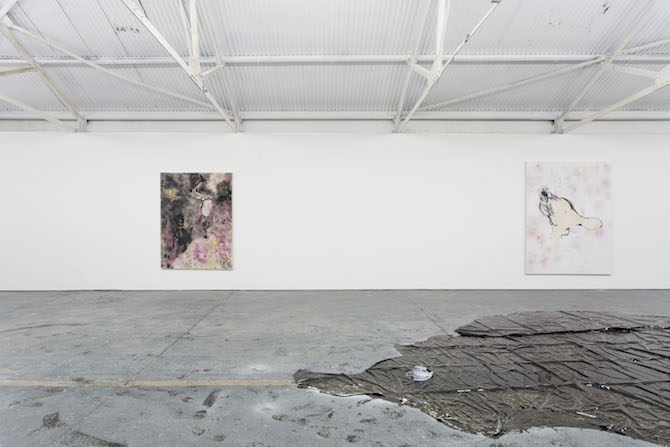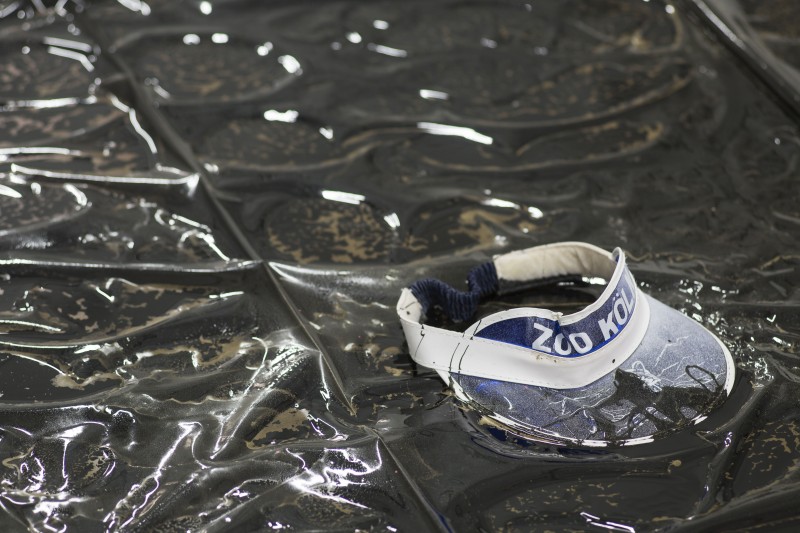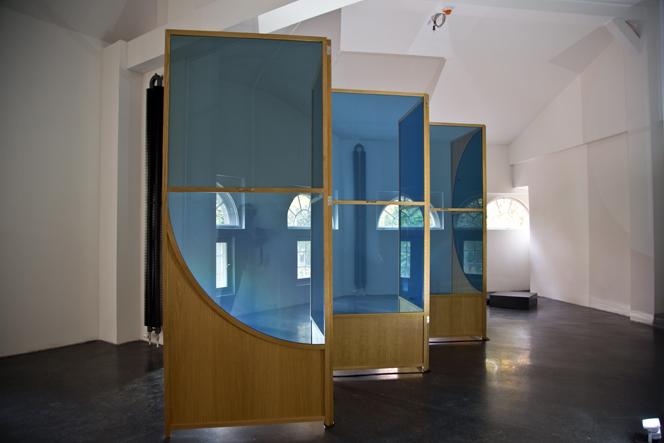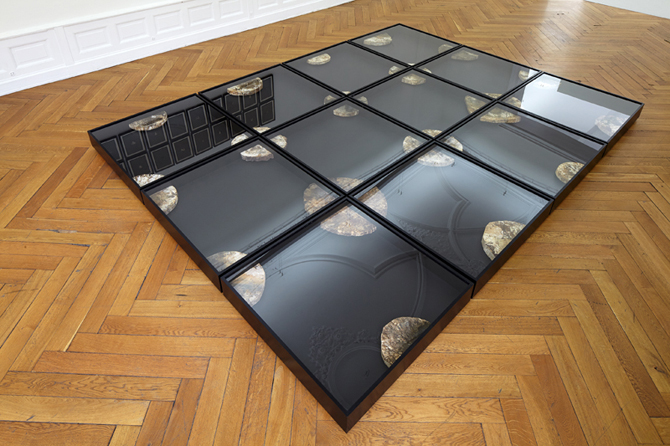

 all images: ZOO KÖLN by Robin von Einsiedel at Bosse&Baum (24.10-14.12), Courtesy Oscar Proctor, © Robin von Einsiedel
all images: ZOO KÖLN by Robin von Einsiedel at Bosse&Baum (24.10-14.12), Courtesy Oscar Proctor, © Robin von Einsiedel
For the first and hopefully the last time in my life I have mistaken the torso of Diego Velasquez for the shape of a sausage. But luckily this embarrassing error did not happen at the Prado in Madrid, but instead while looking at a painting by British artist Robin von Einsiedel, trying to make sense of his peculiar compositions and motifs. Odd, cartoonish characters from kids' series and comics appear on abstract, sometimes even minimalist backgrounds, which seem to secretly play the lead role in the works. Robin concerns himself with materials – their manipulation and inherent relation between solid existence and cosmic emergence. Now, after recently graduating from RCA, the 1988-born artist shows his newest works in the exhibition ZOO KÖLN at Bosse & Baum, a young Peckham-based gallery that established its permanent space only this October. I asked Robin a few questions about his practice and about why Yogi-Bear and company keep on occupying the paintings and sculptures that he makes.


